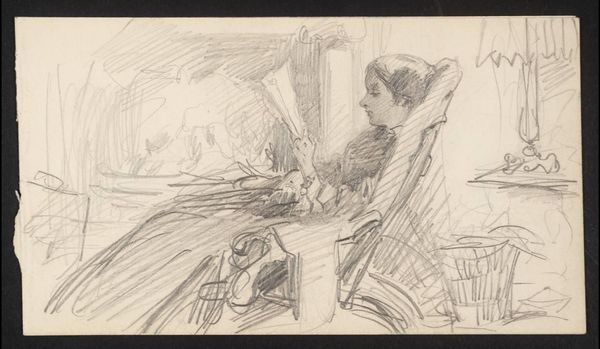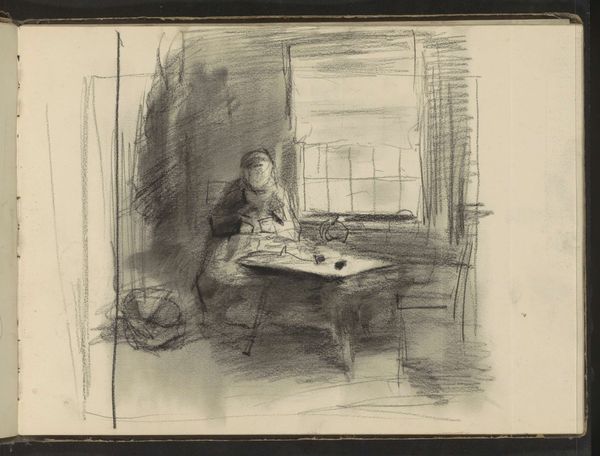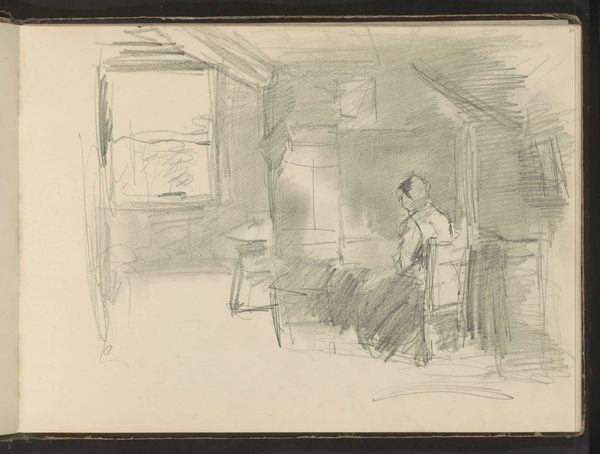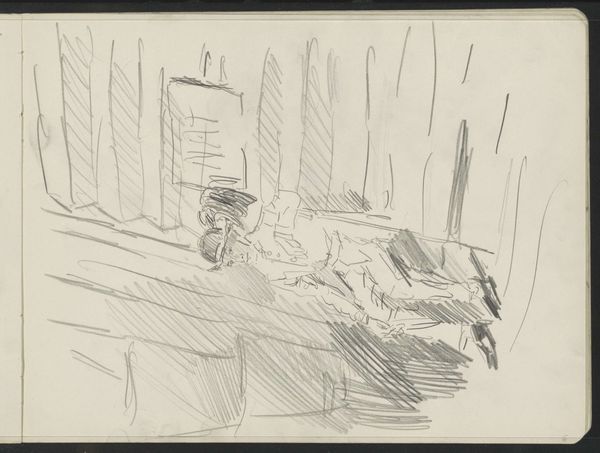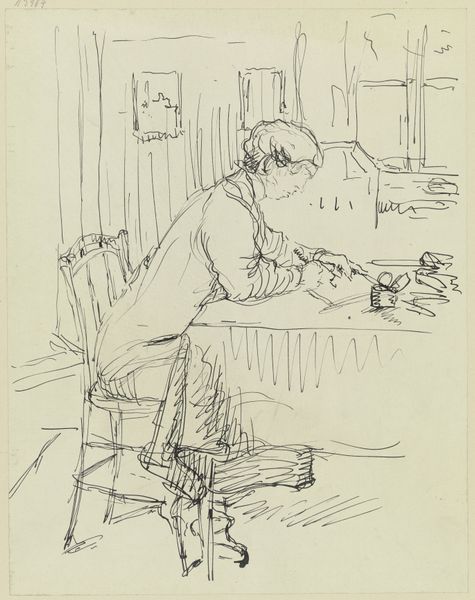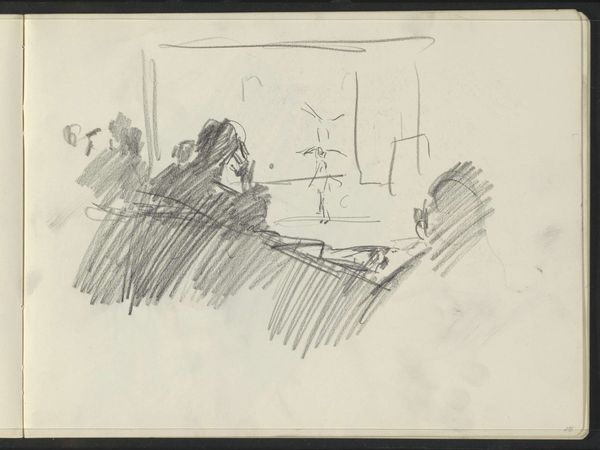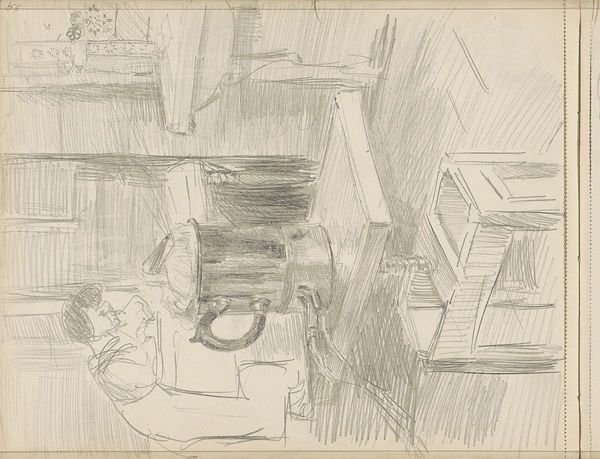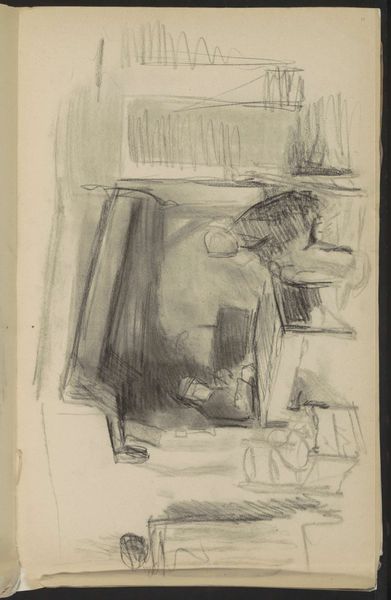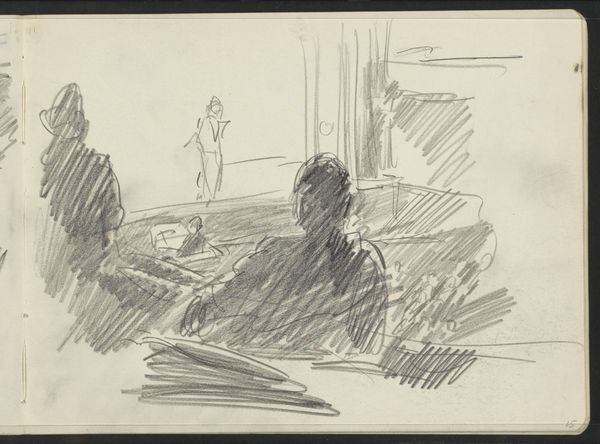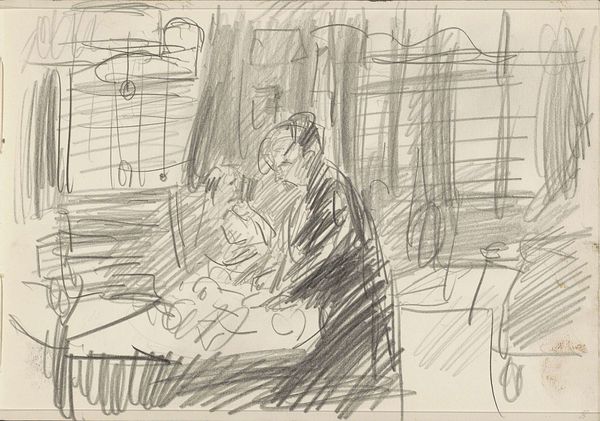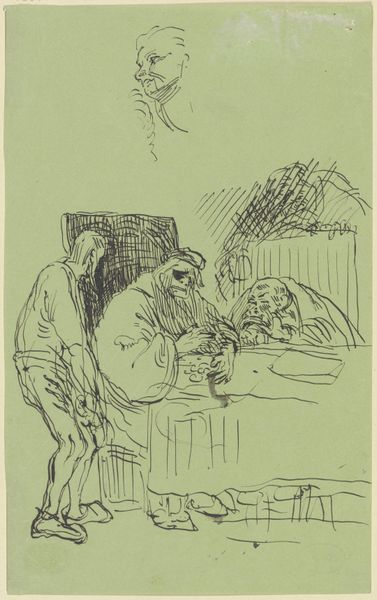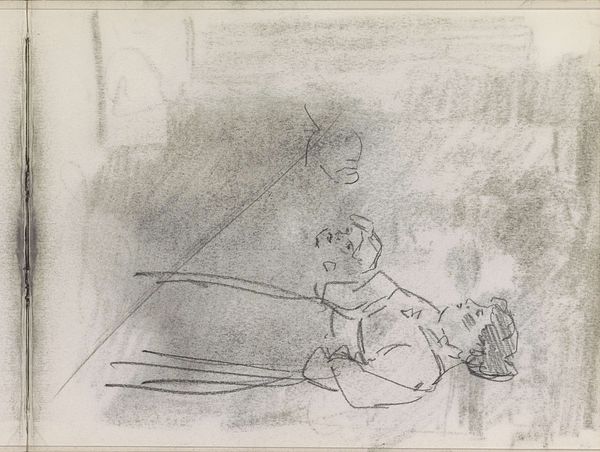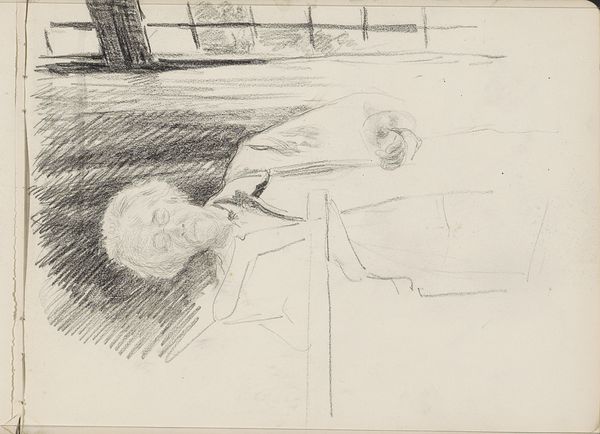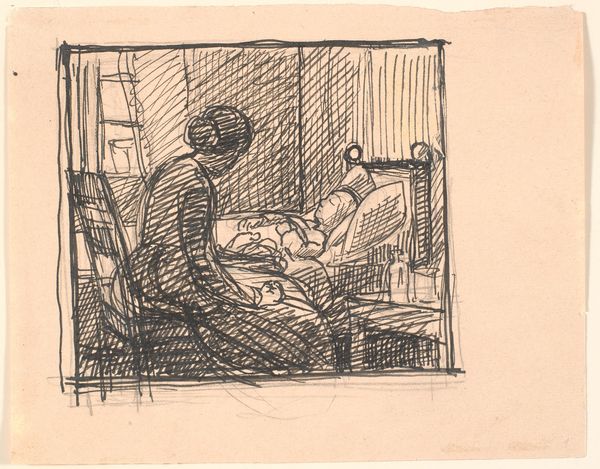
Studie van de echtgenote van Carel Adolph Lion Cachet, handwerkend, op de rug gezien 1874 - 1945
0:00
0:00
drawing, pencil
#
portrait
#
drawing
#
imaginative character sketch
#
light pencil work
#
pencil sketch
#
personal sketchbook
#
idea generation sketch
#
sketchwork
#
ink drawing experimentation
#
pencil
#
sketchbook drawing
#
storyboard and sketchbook work
#
sketchbook art
#
realism
Dimensions: height 214 mm, width 263 mm
Copyright: Rijks Museum: Open Domain
Curator: Here we have "Studie van de echtgenote van Carel Adolph Lion Cachet, handwerkend, op de rug gezien," which translates to "Study of the wife of Carel Adolph Lion Cachet, crafting, seen from the back." This pencil drawing dates from sometime between 1874 and 1945. Editor: My immediate impression is one of quiet domesticity, a momentary glimpse into the private sphere. The soft lines and muted tones evoke a sense of gentle industry and thoughtful solitude. Curator: Absolutely. The depiction of a woman engaged in handwork during this period is ripe with social and historical context. The act of crafting, often relegated to women, speaks to issues of gender roles, domestic labor, and the creative expression allowed, or rather, prescribed, to women. This image resonates within a larger narrative of female agency. Editor: Yes, I see that domestic symbolism. But consider the gesture itself – she is bent over her craft, almost reverentially. It echoes the countless depictions of women engaged in needlework, weaving, or tending to domestic duties throughout art history. Craft as ritual; devotion embodied in thread and needle. There is even a parallel to the iconography of spinning fate. Curator: Intriguing, viewing the handwork itself as symbolic. And this allows us to contemplate the potential resistance within this seemingly passive act. Did this handiwork allow for personal creativity and the reclaiming of agency within the confines of domestic expectations? Editor: I find the very ambiguity of her posture so telling. The way the light falls, obscuring her face… Is it fatigue? Focus? A meditation woven into each stitch? Curator: Precisely. Considering Cachet's other work and the societal landscape of the time, it’s crucial to approach this study not just as a portrait, but as an observation of women’s restricted roles. The “study” nature of the work hints at the artist's investigation of his subject's place in society. Editor: Well, looking at it from this point of view does offer a fresh perspective. It really shows us how what appears simple can hold multiple, rich layers of cultural memory. Curator: And hopefully offers insights that continue to resonate today. Editor: Agreed. Every image, regardless of the apparent simplicity, is filled with a legacy that evolves with time.
Comments
No comments
Be the first to comment and join the conversation on the ultimate creative platform.
